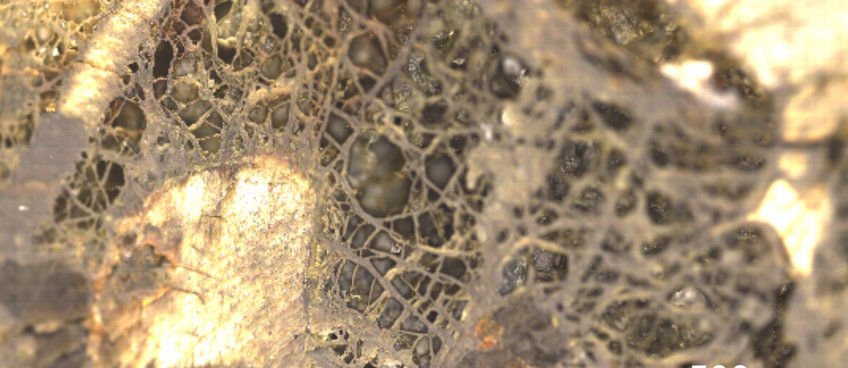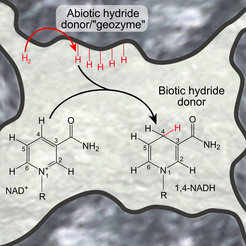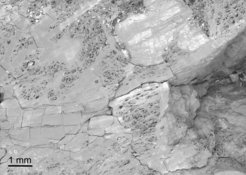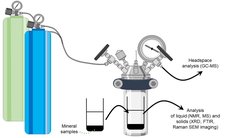
Geochemical Protoenzymes

The last universal common ancestor (LUCA) arose in an environment of rocks and water on early Earth about 4 billion years ago. We can connect LUCA's metabolism to its geochemical roots through top-down comparative bioinformatics and through bottom up geochemical laboratory studies, using minerals and inorganic redox partners (hydrogen, metal ions) instead of catalysts as enzymes. The mechanisms that link top down and bottom up approaches, however, are under-investigated.
Our group wants to change that by experimentally connecting central metabolic cofactors and enzymatic reactions that were present in LUCA to early Earth geochemical reaction partners with a focus on CO2 fixation. The goal is to understand the transition from environmental reactions to genetically encoded metabolic functions. Previously, we have already successfully catalysed the reduction of the redox cofactor NAD+ with hydrogen under geochemical conditions (Pereira et al. 2022).
We are interested in how the key molecules of metabolic pathways were selected in early chemical evolution. By charting the so far underexplored interactions between chemically active environments and metabolism we hope to gain insights into their coevolution before they became separated by the origin of cellular organization. We aim to close gaps between geo- and biochemistry and open the doors to new, unseen approaches to directly connect cells/microbes with their environment, both their cradle and their habitat.

Our projects include biological and (geo)chemical approaches that presently are disparate. The opportunities lie at the interface between the disciplines. We are aiming for a highly interdisciplinary team and experimental environment. We want to advance in the experimental reconstructions of the first biology-like reaction networks in a prebiotic context.
Biological, chemical and geological experimental and analytical methods play equal roles in our lab. Enzyme assays, liquid state chemical analyses (NMR, LC-MS, FTIR, Raman), solid state chemical analyses (XRD, FTIR, Raman), imaging techniques (Raman and electron microscopy, see Fig. 1 and 2) and high pressure catalytic setups (Fig. 3) are only a part of the techniques we are and will be using for our research. We want to fill a niche that connects both biological (top down) and chemical/geochemical (bottom up) approaches—in a conceptual and in an experimental context.



